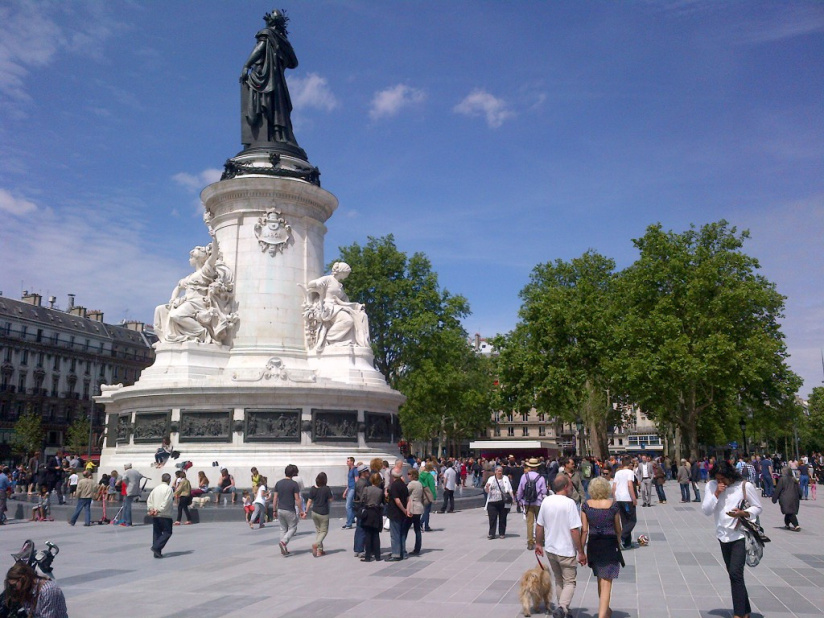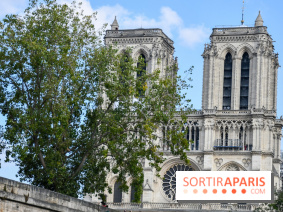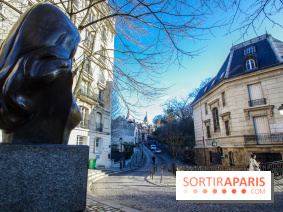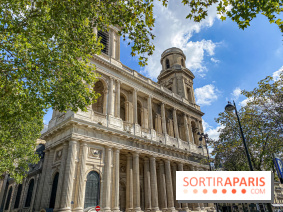Paris counts no fewer than 500 squares. There are the many small and hidden squares (we were actually talking about right there). And there’s the large and majestic squares. Squares intertwined with the great History of France. Squares that witnessed major events.
Here’s a guide of Paris historic squares to learn more about the history and the architecture while enjoying a stroll in the French capital.
The Place Vendôme is one of the most famous and luxury squares in Paris and this, since its construction. Indeed, at the instigation of Louis XIV, Jules Hardouin Mansart famous for being the architect of the Palace of Versailles, creates in 1699 the blueprints of this rectangle square typical of the classic French town planning. The Sun King wishes a place that embodies and honors the monarchy and his reign in the heart of Paris. During the French Revolution, the Place Vendôme is renamed Place des Piques [the Square of Pikes] and the horse statue of Louis XIV is destroyed and replaced in 1810 by the Vendôme Column. Since the Second Empire, the Place Vendôme has become the place of luxury and Parisian elegance, extending the Rue de la Paix – very luxurious itself. Big names of jewelry, leather goods and haute couture took over the place.
The Place des Victoires is one of the four royal squares in Paris. Dedicated to Louis XIV’s military victories, this square at the corner of the 1st and 2nd arrondissements is the symbol of the power of the Sun King. It’s Maréchal and Duc de la Feuillade, the king’s famous courtier, who had the idea. The latter orders sculptor Martin Desjardins a huge and triumphal bronze statue of Louis XIV. In addition to the statue of the Sun King, La Feuillade has famous architect Jules Hardouin-Mansart built a square to house the statue: the Place des Victoires. It’s the first circular square in the history of classic town planning! From now on, kings of France are buried and the Place des Victoires, as well as the Place Vendôme, became a place devoted to high fashion and fashion designers.
Pedestrian since 1982, the Place de l’Hôtel de Ville is now the favorite place for many entertainments for local inhabitants and tourists. Turned into an ice-skating rink in the winter, as a broadcasting place for major sporting events such as the Fifa World Cup or as a concert venue in the summer it never sleeps and knows how to gather the crowds. But if we go several centuries back, no soccer nor ice-skating rink at this place in Paris but a desert and sandy ground, in other words, a strand hence the name in French: Place de la Grève. The square was long used for public executions. Among the executed victims: Ravaillac Henri IV’s murderer and Catherine Deshayes, the famous poisoner in the poisoning case. It’s there that the first guillotine execution took place in 1792!
The Place de la Concorde has been created between 1755 and 1775 at the instigation of king Louis XV. Built in a classic style by the king’s first architect, Jacques Ange Gabriel, this octagonal square was surrounded by prestigious hotels including the famous Hôtel de Crillon. It quickly becomes the theater of the biggest royal and popular events: weddings, royal births, fireworks let off for France’s victories abroad. During the French Revolution, the Place Louis XV becomes the Place de la Révolution. Louis XV statue is taken down and replaced by the Liberty, symbol of this revolutionary period. It’s on this legendary square that in 1793 Louis XVI and Marie-Antoinette, Danton and Robespierre have been guillotined.
In the beginning, the Place de la République was nothing but a small Parisian square. But in the 19th century, it becomes a significant Parisian transportations hub (which is still the case today!) and is named the Place du Château d’Eau because of the Fontaine du Château d’eau set on the square in 1811! Shortly after, in 1854, the Place du Château d’Eau is fitted by Baron Haussmann as part of his great town planning plan to rework the Parisian space under the Second Empire. Haussmann fits a large rectangular square. In 1879, the square is permanently named the Place de la République in tribute to the values of the Republic. On the occasion, an architecture contest is held to erect a monument on the square at the size of the Republic. The contest is won by the Morice Brothers who create the Monument de la République, a 25-m high monument made of bronze. The latter is inaugurated on July 14, 1883, on Bastille Day, France’s National Day!
Symbol of the French Revolution, the Place de la Bastille and its famous Forteresse de la Bastille had known a turbulent story. Over the centuries and the sovereigns, the fortress changes its use: it becomes a gun room, a reception hall under reign of Francis I and then the vault of the royal treasure under Henri IV. But it’s Cardinal de Richelieu, under Louis XIII’s reign, who gives it’s the use we all know: the Bastille prison! Luckily, the French Revolution arrives, and the storming of the Bastille is seen as the first revolutionary act. On July 14, 1789, this symbol of the royal power of the Ancient Regime is under siege and destroyed stone by stone. In 1803, the famous 46-m high July Column is erected in the middle. Did you know that on July 14, 1790 it was on the Place de la Bastille that the first ball has been held? A French tradition still lasting today!
Before being called the Place de la Nation it was called the Place du Trône [Square of the Throne]. It was named after the throne set on the square back in 1660 to celebrate the return of Louis XIV and Maria Teresa of Spain – whom the Sun King married in Saint-Jean-de-Luz. In the 19th century, the Place de la Nation is adorned with its beautiful statue that we can still admire today in its center: the Triumph of the Republic! You can’t forget that on the Place de la Nation provocatively renamed the Place du Trône-Renversé [Square of the Toppled Throne] at that time, many public executions were conducted. A guillotine was set, and it’s was one of the most active ones in Paris. During the year 1794, in a few weeks only, about 1,300 political convicted persons have been guillotined.
Enjoy your walk, visiting Paris squares!
Prices
Free











































